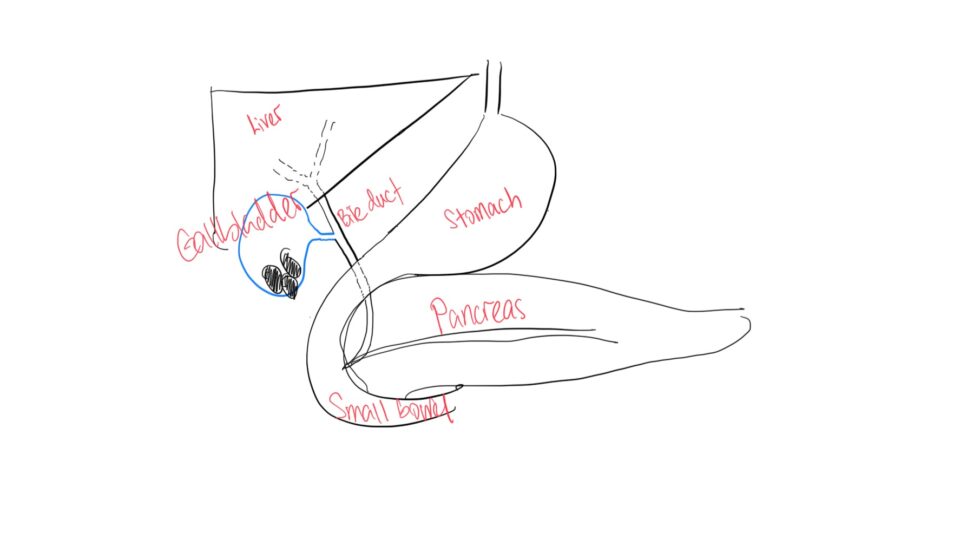What the gallbladder does
Your gallbladder (GB) is a small pouch located under the liver. It stores bile, a green-yellowish fluid made by the liver that helps break down fats and carries waste out of the body.
• Between meals the GB fills with bile.
• When you eat it squeezes and sends bile through a small tube (the bile duct) into the small bowel.
Why gallstones hurt
Gallstones are tiny, hard lumps that form inside the GB.
• If a stone blocks the GB outlet, it cannot empty itself and that causes a gripping pain called biliary colic which can last for hours and sometimes associated with nausea and vomiting.
• Usually the stone might move and the pain settles, or sometimes it may persist and progresses to acute inflammation or infection (cholecystitis).
After the first GB attack there is about a 1-in-3 chance of another episode. Each attack makes the next one more likely, so surgeons usually advise removing the GB once symptoms start.
Key facts about the operation
| Name | Laparoscopic cholecystectomy (key-hole surgery to remove the GB) |
| Anaesthetic | General anaesthesia – you sleep through the operation |
| Duration of surgery | About 1–2 hours |
| Hospital stay | Most people go home the next day |
The surgeon typically makes four small incisions to insert a camera and other endoscopic instruments to remove the GB from underneath the liver.
Safety checks during surgery
An on-table X-ray called a cholangiogram is often done to shows the bile ducts.
• If there are stones in the bile duct, they are flushed out. However, if this is not successful you might need another procedure called endoscopic retrograde cholangiopancreatography (ERCP), where an endoscopic camera is inserted into your stomach and the small bowel to remove the stones.
Possible risks (overall low)
| Risk | How often? |
|---|---|
| Bleeding or wound infection | Less than 5 % |
| Injury to bile duct, liver, stomach or small/large bowels | Less than 1 % |
| Conversion to an open surgery (if there is extensive inflammation or scarring, or if there are complications encountered) | About 1–2 % |
Recovery
• Pain relief – take paracetamol and an anti-inflammatory (such as ibuprofen) regularly for 4–5 days. Use a stronger tablet like oxycodone or tapentadol only for severe pain if the above are not enough.
• First week – gentle activity at home (e.g. short walks and light chores) is OK.
• Back to work
• Desk / computer job: 1–2 weeks.
• Heavy or active job: 3–4 weeks.
• Exercise – wait 4 weeks before gym, swimming or heavy lifting to the wounds to heal properly.
• Food – for the first month avoid very greasy meals; too much fat may cause loose stools. After that, you can return to your normal diet.
Taking care of your wound
Keep dressings dry and clean
• You can shower with the dressings on. Pat them dry with a towel and use a hairdryer to dry them completely.
• Avoid soaking the area in baths or swimming pools as this can cause infection.
When to remove dressings
• After 7 days you can remove the dressings. A simple way is to get them thoroughly wet in the shower; they will peel off smoothly.
Stitches
• All stitches are dissolvable, so you don’t need to have them removed.
Long-term outlook
You can live normally without a gallbladder. Digestion and general health return to normal once your body adjusts.
Follow-up
A routine check-up is set for about one month after surgery. Contact us sooner if you develop a fever, worsening pain, yellow skin (jaundice) or any other worry.
Still deciding?
If you have had a gallstone attack, talk with your GP or surgeon about having the operation before the next one strikes. Planned surgery is almost always easier – and safer – than emergency surgery.
